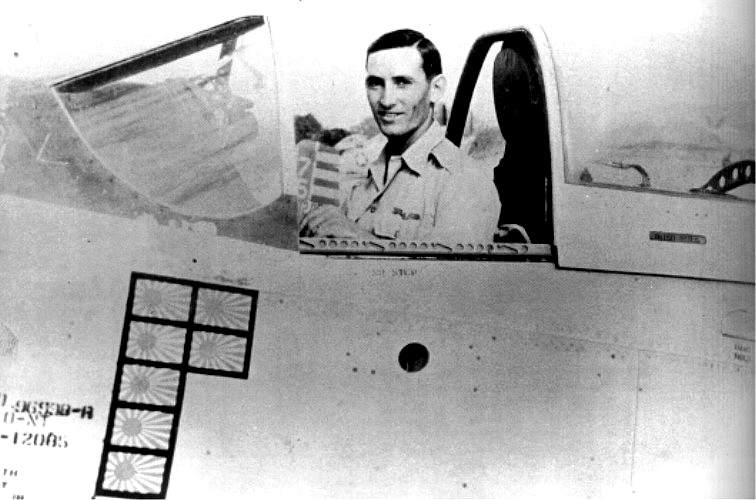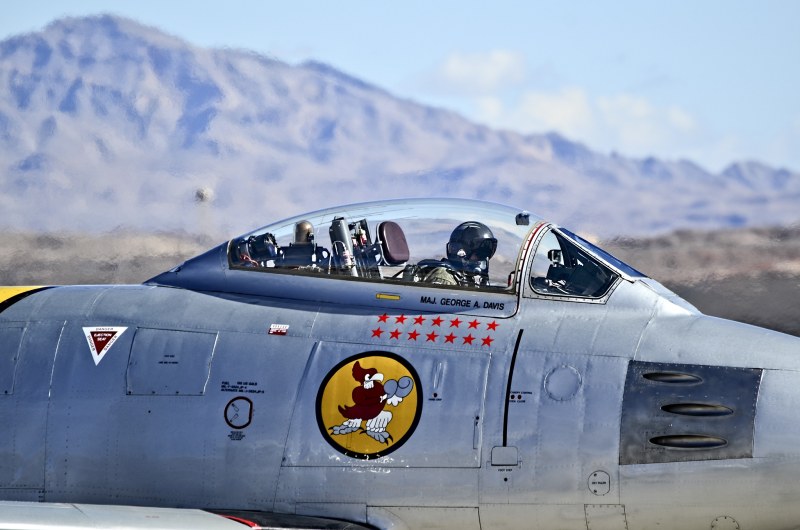Honor and remember one of America’s greatest fighter pilots, George Andrew Davis, who was an ace in both World War II and Korea. Davis earned the Medal of Honor posthumously after he attacked twelve Chinese MiG-15’s before they were able to pounce on unaware American planes.

In World War II, Davis flew over New Guinea and the Philippines, flying the P-47 Thunderbolt. He had seven victories in the War, six of them during the liberation of the Philippines. He earned the Silver Star, two Distinguished Flying Crosses and nine Air Medals over 266 combat missions.

Davis stayed in the Army after the War and then joined the newly formed Air Force in 1947. He trained in the F-86 Sabre and then went to Korea in February 1951. He commanded the 334th Fighter-Interceptor Squadron and was respected for the time and effort he took to train new pilots in combat tactics. His men called him “One Burst Davis” because he was such a disciplined and accurate gunner.

Davis earned the Distinguished Service Cross on November 30, 1951, when he came to the aid of damaged plane flown by Raymond Barton. Davis pounced on two Migs attacking Barton, whose plane was badly hit, killing the Chinese flight leader and forcing the rest of the pack to break off their attack. He then escorted Barton back to base, despite being low on fuel and ammunition himself.

By February 1952, Davis has twelve victories and had flown thirty combat missions. He had averaged one kill for every third mission. On February 10, 1952, Davis was killed when engaging a Mig squadron that was attacking a flight of F-86 bombers. His Medal of Honor was controversial in that Davis’ wife had been an outspoken opponent of the Korean War, who had vocally criticized the Air Force’s combat rotation policy. Regardless, please honor and remember George Davis.


